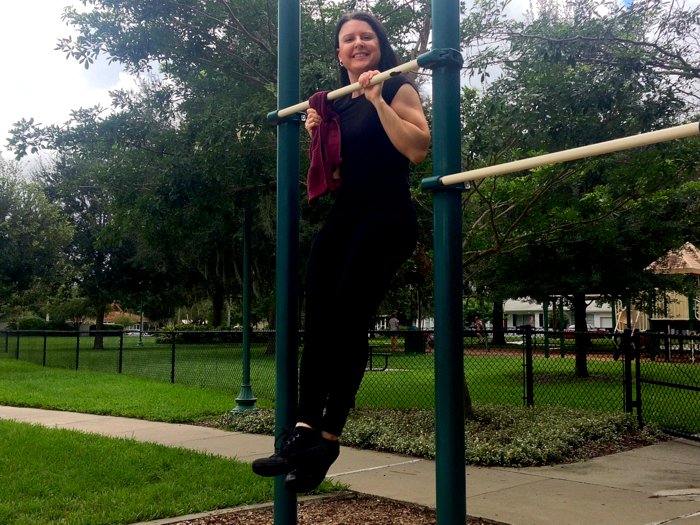
Many times we associate grip strength and grip training with those ubiquitous spring-tension grippers and strongman training. While I really enjoy grip training with heavy odd objects, giant kettlebells, etc. it’s also very possible to train for a monster grip using bodyweight training only. With just a little creativity, bodyweight grip training presents infinite variations and challenges—and you can do most of it just about anywhere.
Having a strong grip is a prerequisite to so many bar-based calisthenics exercises—if you can’t hang on long enough, then you won’t be able to do a meaningful number of reps. Beginners will often need to build up their grip strength, as modern life and desk-based jobs don’t seem to test or build our grip.
As many PCC instructors and instructor candidates already know, grip strength is essential to passing the Century Test—you’ve got to be able to hang out on that bar for a while to do those twenty knee raises. In the excitement of testing, those twenty knee raises can seem to take a very long time, and you’ve got to hang on for every single one of them. Then, after the knee raises, the guys still need to do 10 pull-ups, and the ladies have to do their 10 Aussie pull-ups as well.
Convict Conditioning Vol. 2 remains one of my absolute favorites, and that’s not just because of the flags, it’s also the focus on grip training. The book begins with a comprehensive guide to hand and grip strength, and every time I look at it, it gives me more new ideas for training, some of which are presented below.
All Angles and Surfaces
At the PCC and in the Convict Conditioning book series, you’ll notice that there’s a variety of grips demonstrated—the “tactical” no-thumbs overhand grip most commonly seen on pull-ups, overhand with thumb wrapped, the chin-up grip with palms facing you, neutral grip with palms facing each other, wide grips, narrow grips, just a few fingers on each hand, two-arm, one-arm, finger-tip grips, and more.

Inspired by old time strongman training—which, properly scaled, is great for absolutely everyone—Paul Wade even includes adding a towel (and later two towels) to timed hangs for an extra challenge. A towel is hard to grip and hang from given its large diameter when bunched up, and because the hand is challenged in a less-familiar and surprisingly challenging vertical orientation.
One day, frustrated by the lack of a plain straight pull-up bar in a commercial gym, I came up with the following variation. I put one hand on one handle, but then looped a small hand towel around another one, then did a short set of 5-6 pull-ups. I made sure to switch sides every other set. It was a great grip challenge and can be done most anywhere.
I’m always looking for new places to do pull-ups. While my city is not constantly covered in scaffolding like NYC, I have been able to find great grip-challenging pull-up spots like I-beams, vertical rafters (very difficult, just doing short hangs there), open stairwell stairs, hand-only rope and pole climbs and more. The next time you visit a playground with young relatives, look around for grip challenge opportunities.
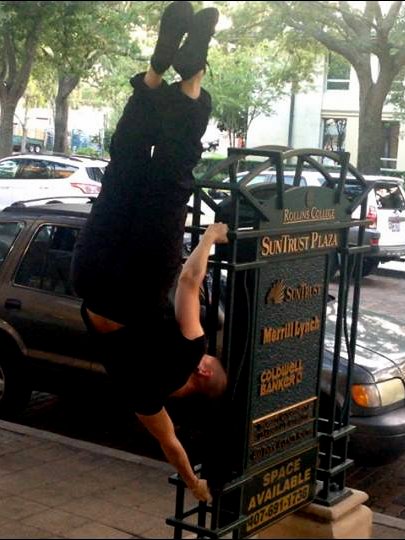
One of my all-time favorite tips from Zach Even-Esh, author of The Encyclopedia of Underground Strength and Conditioning, is to vary the grip on each set of pull-ups (or push-ups) in a workout. Towards your last sets, you might be forced to get very creative.
Speaking of push-ups, if you haven’t tried, them, Neuro-Grip push-ups are a fantastic challenge of yet another angle of grip strength and training. I’ve found that the focus and strength required from them has helped with other exercises like dips, etc. on rings and even when performed on parallel dip bars.
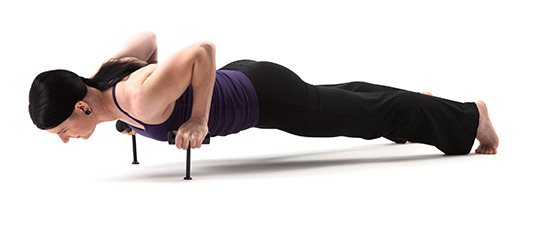 Your Grip = Your Health?
Your Grip = Your Health?
Recent studies have found that grip strength is often an indicator of health. While it seems to be generally accepted that our grip strength declines as we get older, this is yet another opportunity to rebel against the mainstream. We can build up, increase, and maintain our grip strength into our later years if we keep training intelligently. Good health, grip strength and general strength will help us remain safe and independent in our senior years. That sounds good to me even now.
It Goes Both Ways: Train Your Extensors!
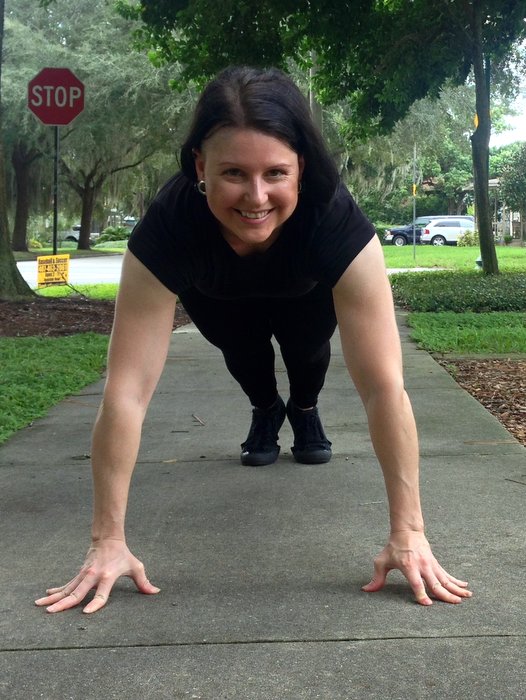
Keeping our hands healthy means that it’s also important to “go the other way” too. In workouts which really emphasize grip training, I like to pair a grip intensive exercise with another exercise that either stretches or challenges the extensors—basically a superset. The extensor exercise can be something as simple as a well executed straight arm plank for time, push-ups, frog or crow stand, handstands if appropriate—or if you’re ready for it, you may want to experiment with fingertip straight arm planks or push-ups at this time too. There’s really no limit to the level of difficulty. It’s important to be patient and gentle though, as fingers seem to take a while to strengthen, and just a second to injure.
Here’s a sample combination from the last part of a favorite at-home workout:
- 45 second pull-up bar straight arm hang
- 30 second or longer crow stand
- rest
- 60 second pull-up bar straight arm hang
- 45 second or longer crow stand
- rest
- 90 second (or keep going for a max PR) pull-up bar straight arm hang
- 45-60 second straight arm plank
Grip Confidence and Breaking Through Mental Barriers
This last section might not apply to everyone, but I’ve observed both with myself and others that once we really begin to work on—and TRUST—our grip strength, then we’re often suddenly able to make a lot more progress on the skills which were otherwise right at the edge of our abilities. Getting the vertical chamber press and the next few human flag steps after it (human flag with one leg straight, one leg bent) were absolutely dependent on my confidence in my grip. I knew I had the strength, especially through the core, but in the past, kicking all the way up to vertical was fairly iffy. Turns out, my brain was putting the breaks on. Training my grip while still working on the rest of those progressions (but with a stall-bar-based neutral grip) was key. After finally putting the pieces back together, I’ve been able to reliably do the move on the first try and I’ve still been (slowly) progressing forward.
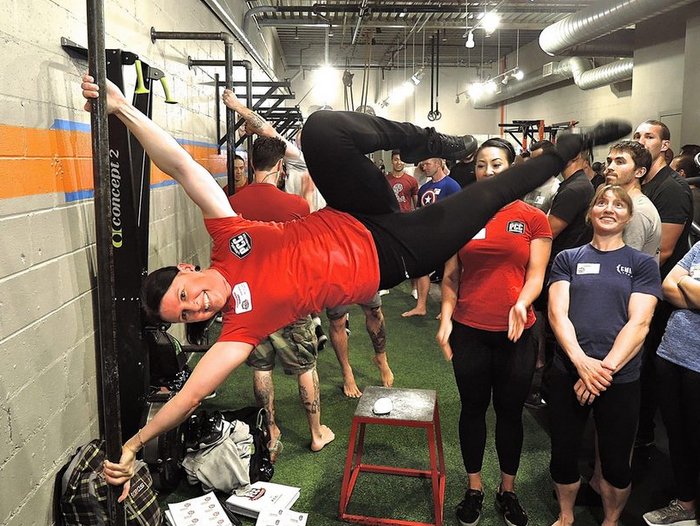
Is there a bar or vertical pole move that’s proved extra challenging for you? Could it be improved with a stronger grip and/or greater grip confidence?
Please share your experiences and questions in the comments below.
Train STRONG!
Adrienne
****
Adrienne Harvey, Senior PCC Instructor, RKC-II, CK-FMS, has been RKC Certified since 2010, and RKC Level 2 certified since 2011. Kettlebell and bodyweight training have been crucial in Adrienne’s personal quest for fitness. A core member of the PCC team, Adrienne loves sharing her knowledge with small groups and individuals. She also loves to develop recipes and workout programs to further support performance, body composition, and of course—FUN. Visit her website, GiryaGirl.com for workouts, recipes, and more.
